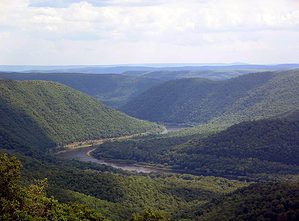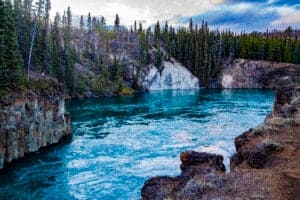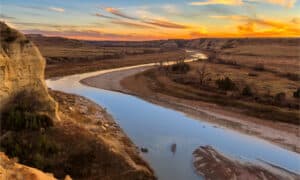The Yellowstone River is important in the United States. This breathtaking body of water is within Yellowstone National Park, a highly visited national park in Wyoming, Montana, and Idaho. Although swimming isn’t allowed within the river, there are plenty of opportunities to fish, birdwatch, and spot wildlife. Follow along to discover what is in the Yellowstone River.
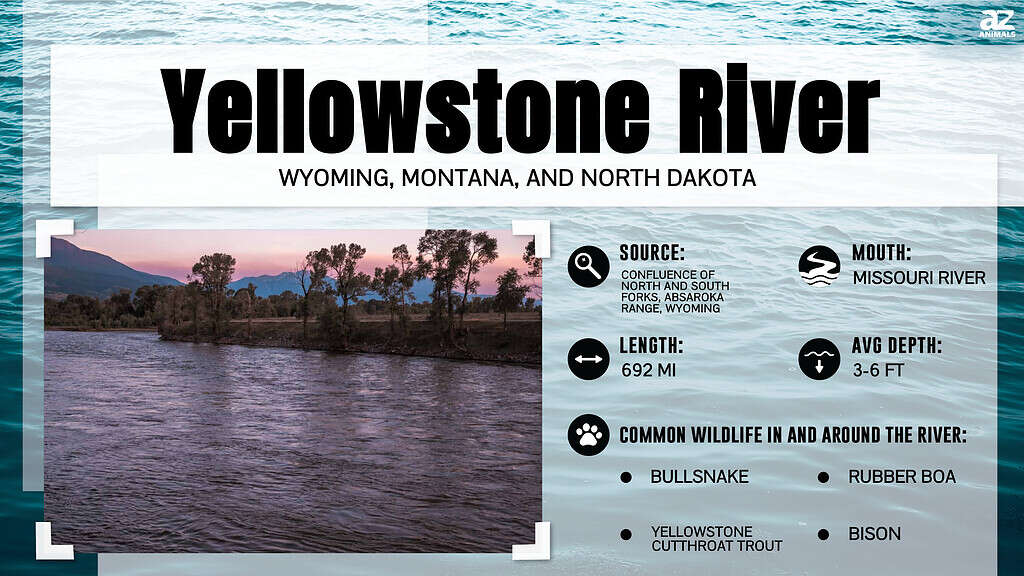
About the Yellowstone River
Before we dive into the many animals that call Yellowstone River home, let’s learn more about this important river. Yellowstone River is one of the last rivers in the United States that isn’t dammed. It’s about 692 miles long and runs into the Missouri River. This tributary has a basin size of 70,000 square miles.
Yellowstone River has a rich history. Many Native American tribes lived near or on the river. One of the original names for this river was Mo’éheo’hé’e by the Cheyenne. However, it was also called the E-chee-dick-karsh-ah-shay by the Crow.
As beautiful as the Yellowstone River is, it’s also dangerous. There have been countless closures due to flooding from snowmelt and rainfall. In 2022, one of the worst Yellowstone River floodings occurred, which destroyed the Carbella Bridge, which had stood for over a century.
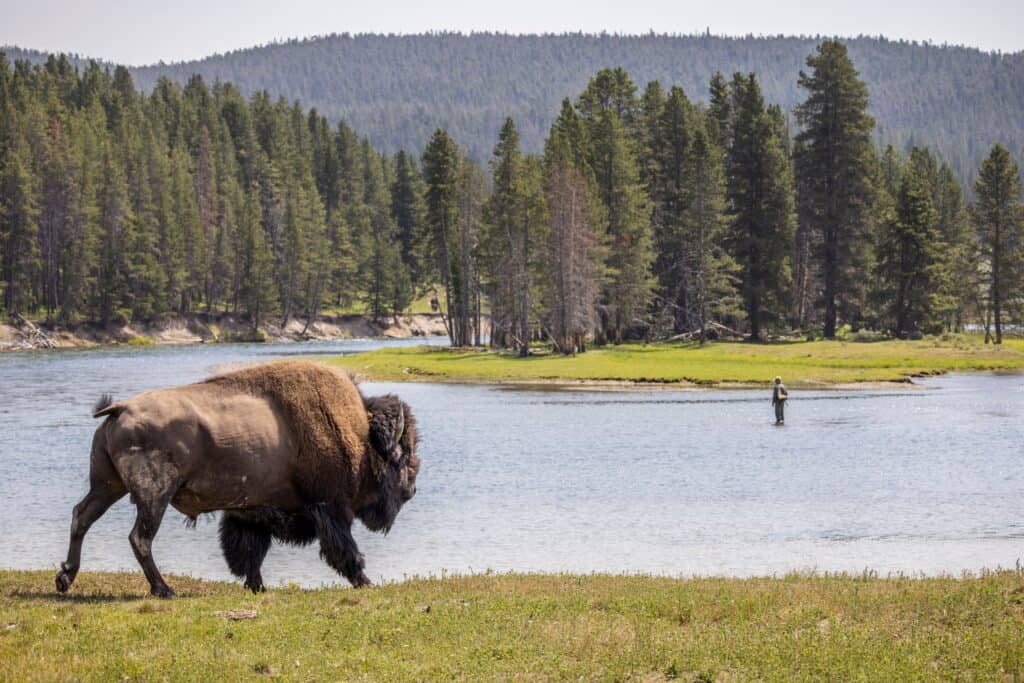
Yellowstone River is about 692 miles long.
©Cavan-Images/Shutterstock.com
Animals That Live in the Yellowstone River
Many animals live in and near the Yellowstone River. This beautiful and long river is surrounded by mountains and forests, great habitats for different types of reptiles, mammals, and fish. Keep reading to discover what lies in the Yellowstone River.
River Otter
North American river otters are playful and sweet animals. They are active year-round, but the best time to spot these loving animals is during the breeding season in March and April. These semi-aquatic mammals are native to North America and are found in most waterways.
River otters aren’t very big animals. They vary in size but can weigh anywhere from 11 pounds to 30.9 pounds. These river otters are excellent hunters and mainly consume fish. However, they’ve been recorded attacking small land mammals and even dogs!
North American river otters stay away from humans, so attacks are rare. There have been less than 50 recorded river otter attacks since 1875.
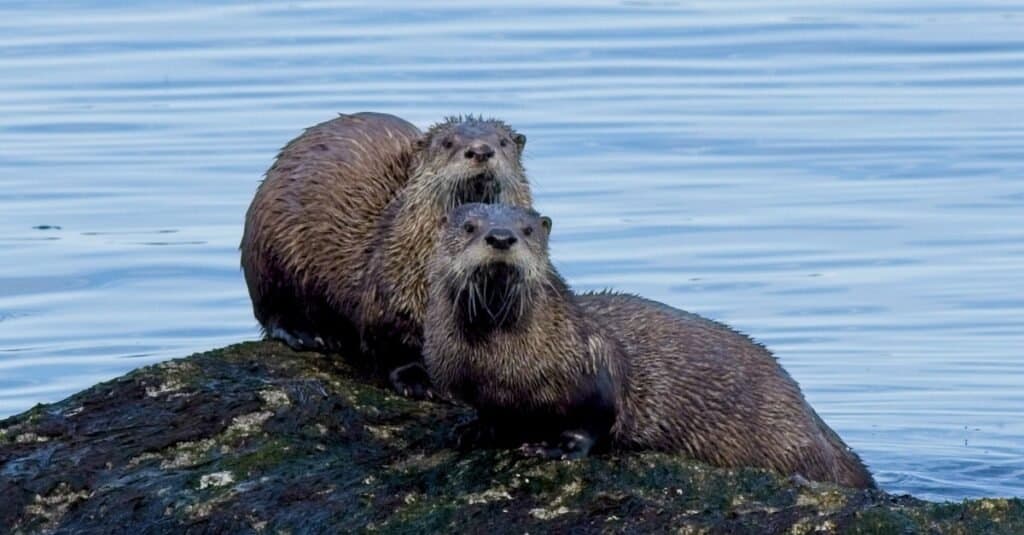
North American river otters are very playful semi-aquatic mammals.
©iStock.com/pr2is
Longnose Sucker
Most animals that live in the Yellowstone River are fish, like the longnose sucker. This freshwater fish is found all across the United States. They are also found in parts of Russia. Longnose suckers are long olive fish that can weigh up to 7 pounds. Most longnose suckers, though, weigh 5 pounds or less. This fish species is easy to distinguish from others because of its elongated snout. Longnose suckers are bottom feeders. They are popular game fish for anglers and are sometimes used as bait for larger fish species.
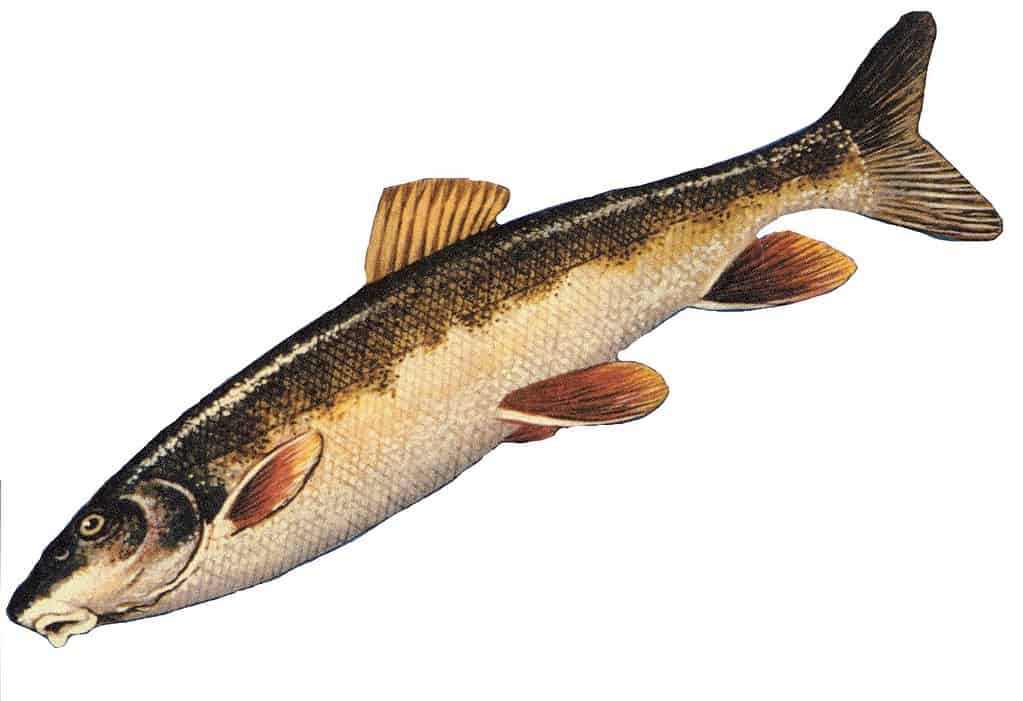
Longnose suckers can weigh up to 7 pounds.
©NOAA Great Lakes Environmental Research Laboratory/Public Domain – License
Cutthroat Trout
The next fish on our list is the cutthroat trout. They are cold-water trout native to the Pacific Ocean, Rocky Mountains, and Great Basin in North America. The specific cutthroat trout you see in the Yellowstone River is the Yellowstone subspecies. They are large and colorful trout that are sadly facing many threats. Overfishing, habitat destruction, and competition have led to the population decline.
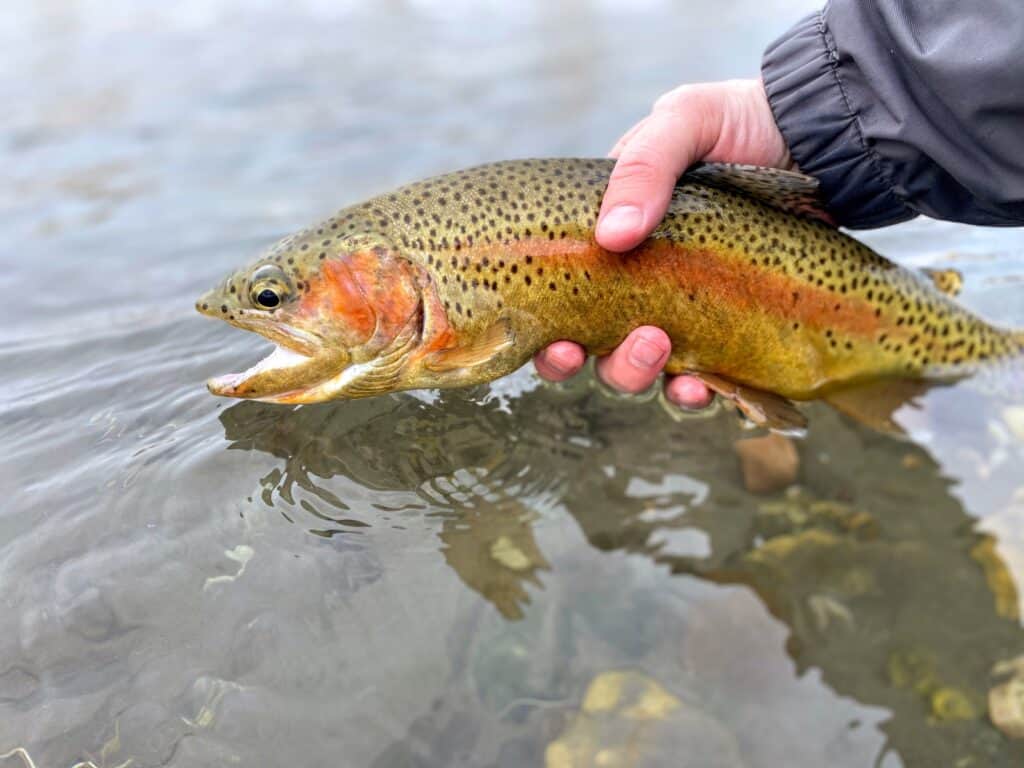
Another animal in the Yellowstone River is the cutthroat trout.
©Ryan Cuddy/Shutterstock.com
Mountain Whitefish
Mountain whitefish are other animals in the Yellowstone River. Despite their name, this lovely fish isn’t entirely white but does glisten. These fish also have dusky olive-green markings on their fins. Mountain whitefish are skinny and slender, weighing up to 6.4 pounds. The largest recorded mountain whitefish measured 28 inches long. Most mountain whitefish prefer cold and deep water. They can sometimes be found close to the bottom of lakes and rivers.
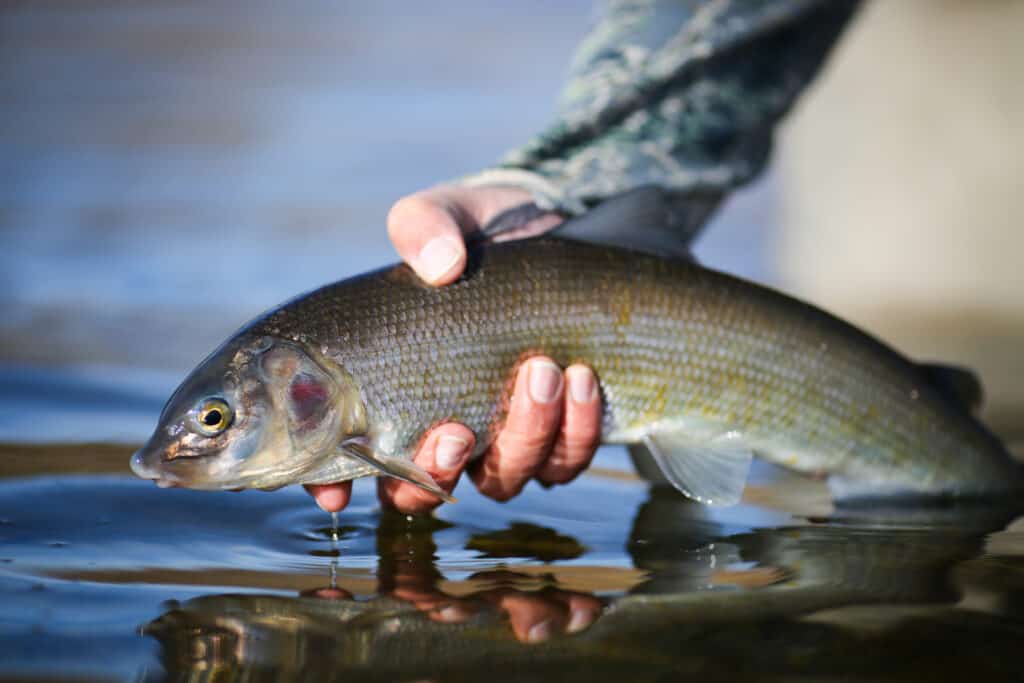
Mountain whitefish are other animals in the Yellowstone River.
©Cannon Colegrove/Shutterstock.com
Rainbow Trout
Not only can you find cutthroat trout in the Yellowstone River, but also rainbow trout. These two trout fish accidentally breed together frequently. Rainbow trout, as their name implies, have shimmering scales of many colors. It’s common for these fish to have a bright red-pink stripe across their bodies. A common place to find rainbow trout in Yellowstone National Park is the Firehole River.
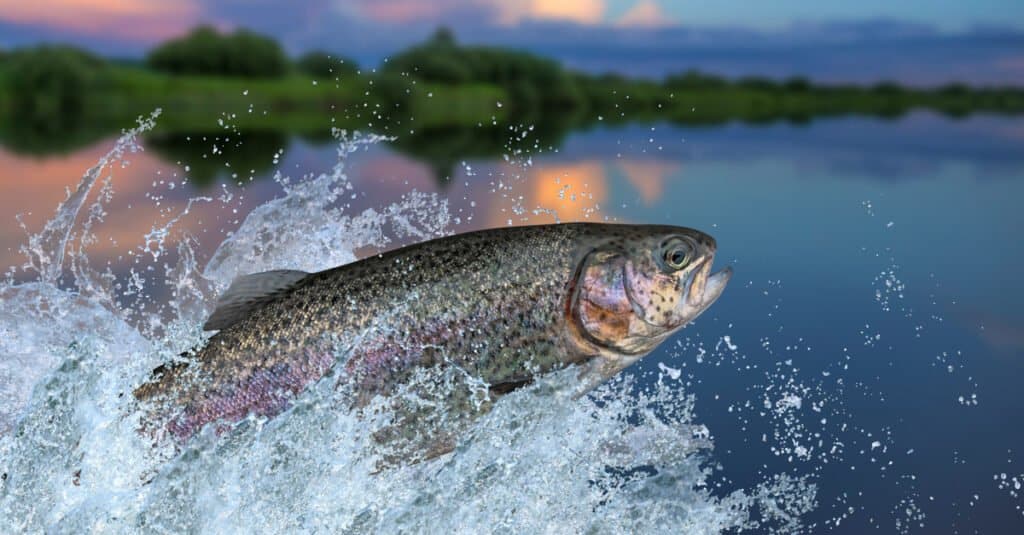
Cutthroat trout and rainbow trout frequently breed together, producing hybrids.
©FedBul/Shutterstock.com
Shovelnose Sturgeon
Last but not least is the shovelnose sturgeon. This strange-looking fish is native to North America. Despite their strange or menacing appearance, shovelnose sturgeons are harmless to humans. These fish can reach up to 39 inches long and typically stay at the bottom of rivers and lakes, feeding on aquatic insects and larvae.
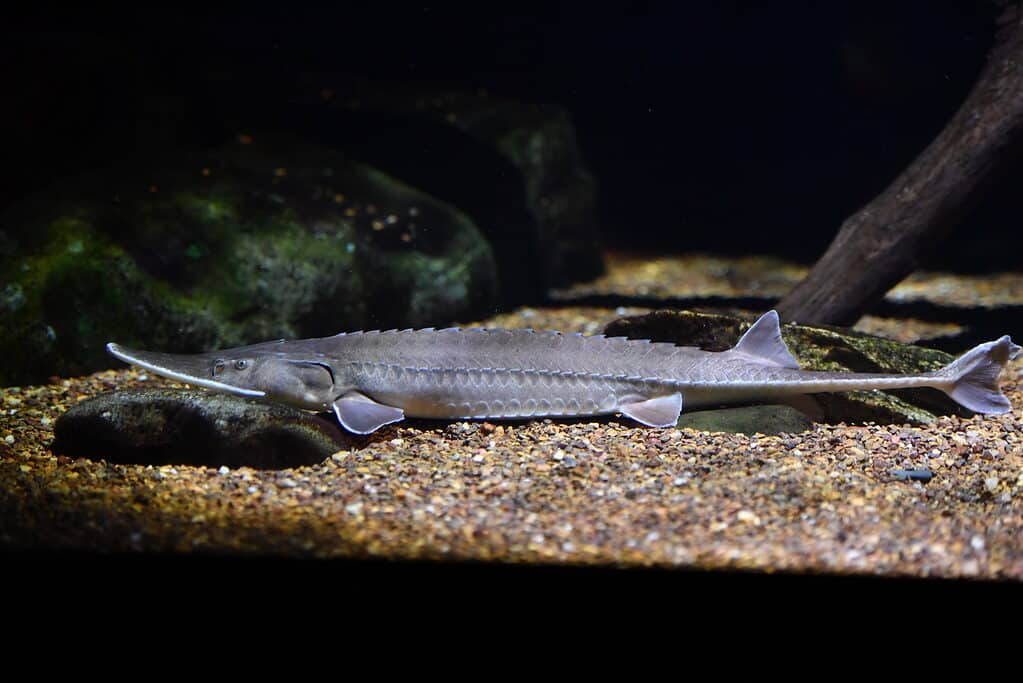
Shovelnose sturgeon live at the bottom of lakes and rivers.
©Andrea Izzotti/Shutterstock.com
Can You Swim in the Yellowstone River?
As beautiful as the Yellowstone River is, you can’t swim in it! There are a few legal places within Yellowstone National Park for swimming. To preserve the park, most lakes and rivers are closed for swimming. Two designated swimming spots within the park include the Boiling River Swimming Area and the Firehole River Swimming Area. Always check the national park’s official website before heading for a swim, as sometimes the swimming spots are closed.
Yellowstone River has suffered from pollution. In 2015, 40,000 gallons of crude from a ruptured pipeline leaked into the river. Sadly, this wasn’t the first time. 63,000 gallons of oil spilled into the river from the Exxon Silvertip Pipeline in 2011. Although the oil spill doesn’t affect the national park a lot, it does contaminate the drinking water.
The photo featured at the top of this post is © iStock.com/ChrisB
Thank you for reading! Have some feedback for us? Contact the AZ Animals editorial team.



